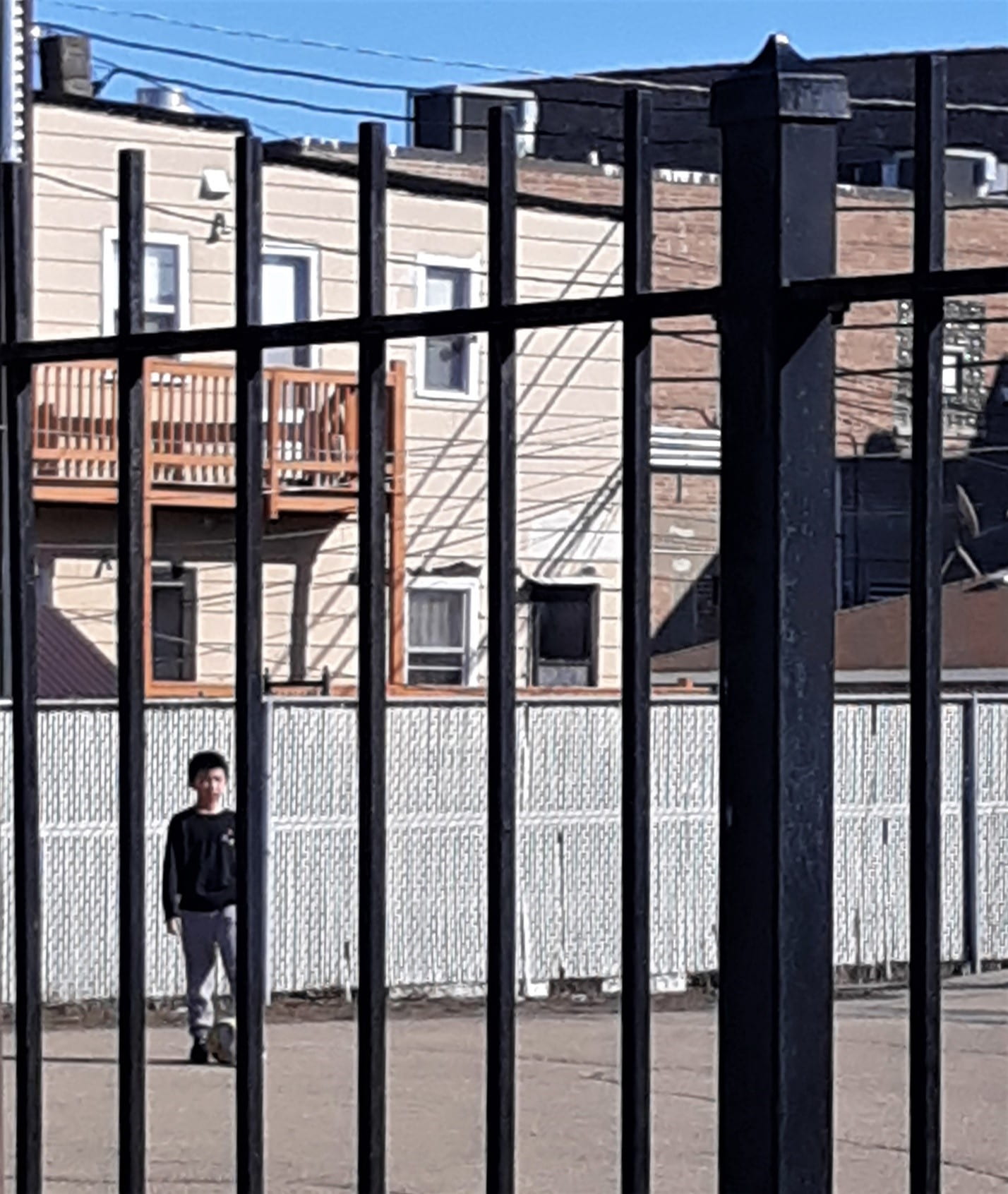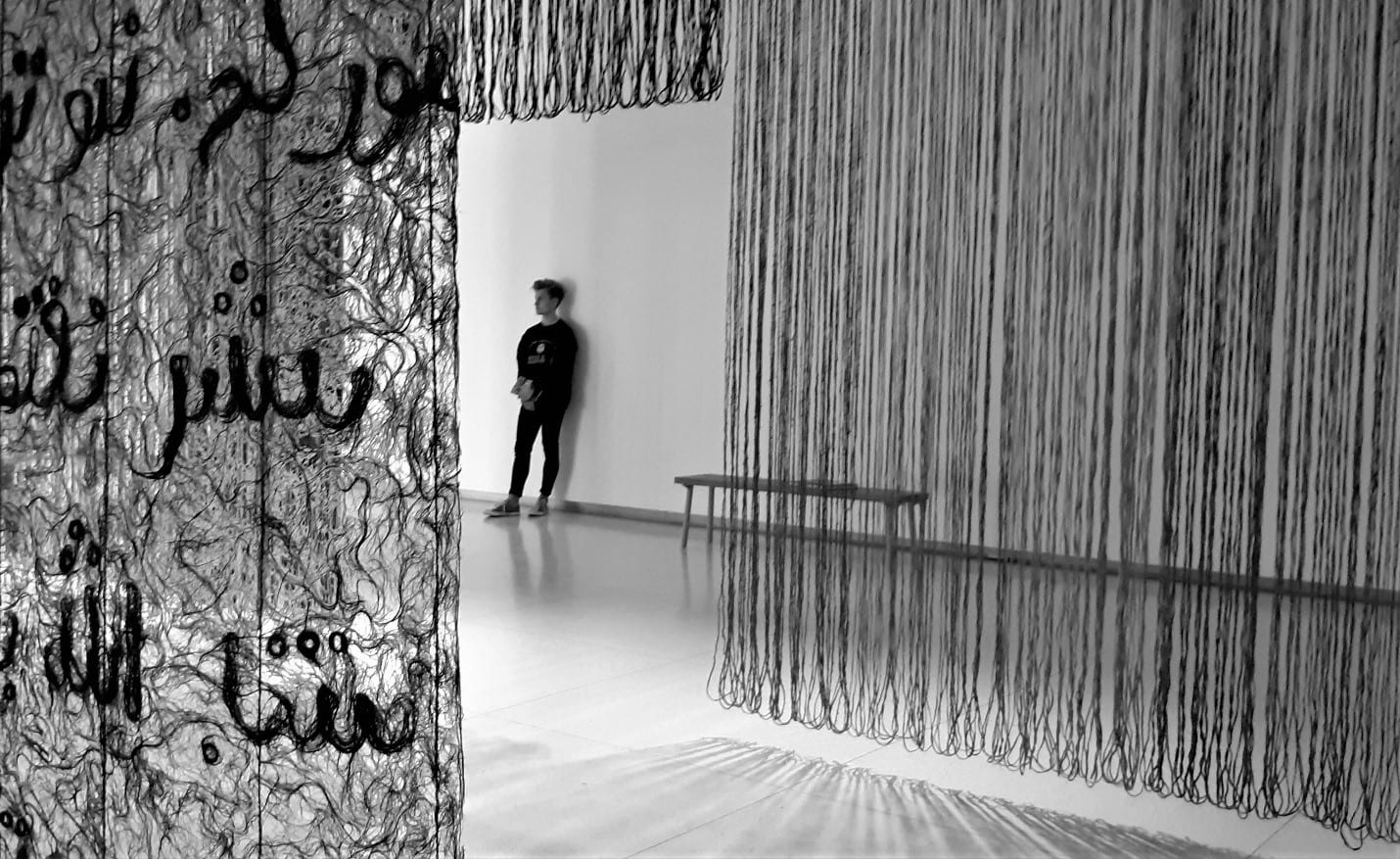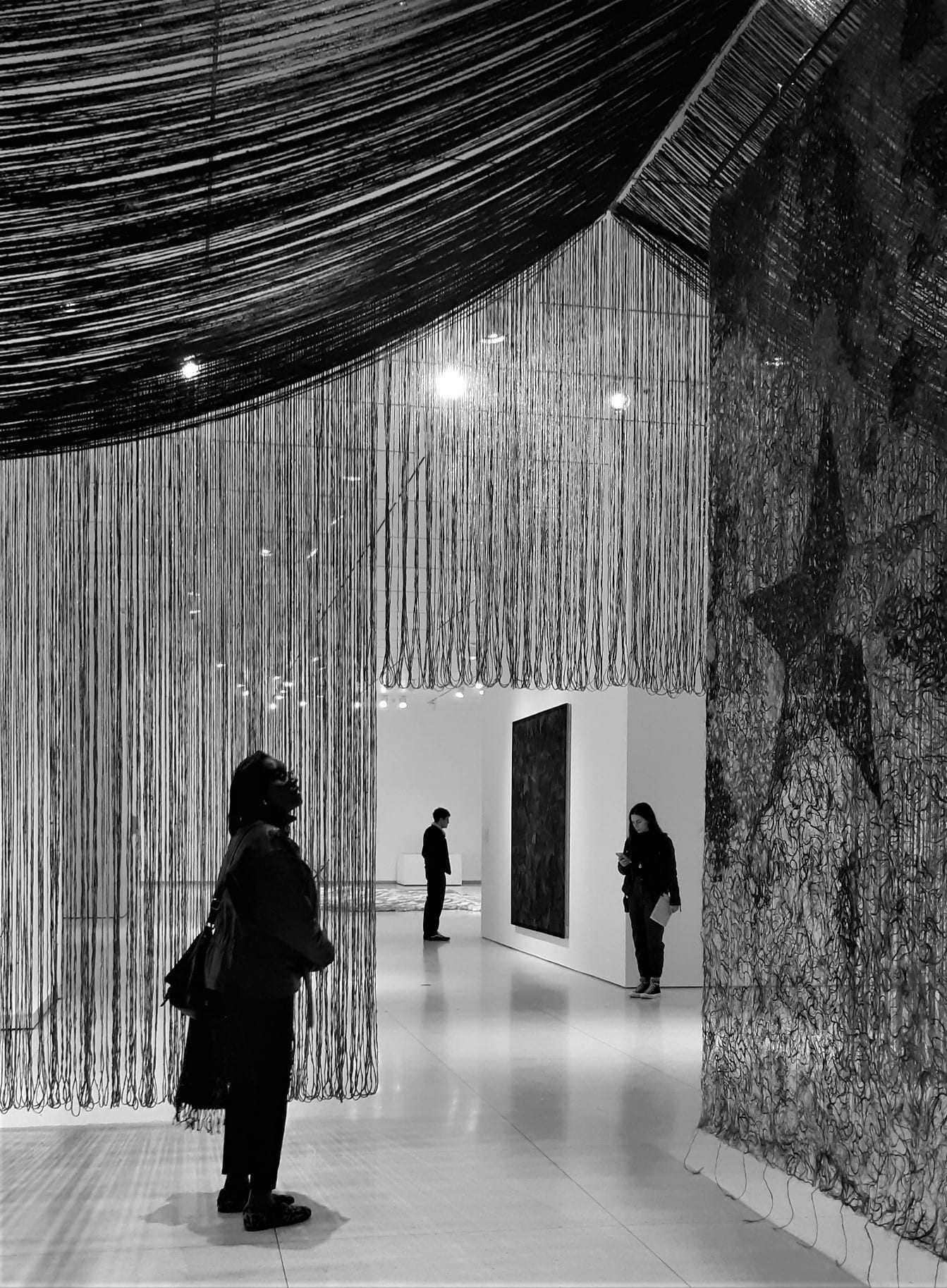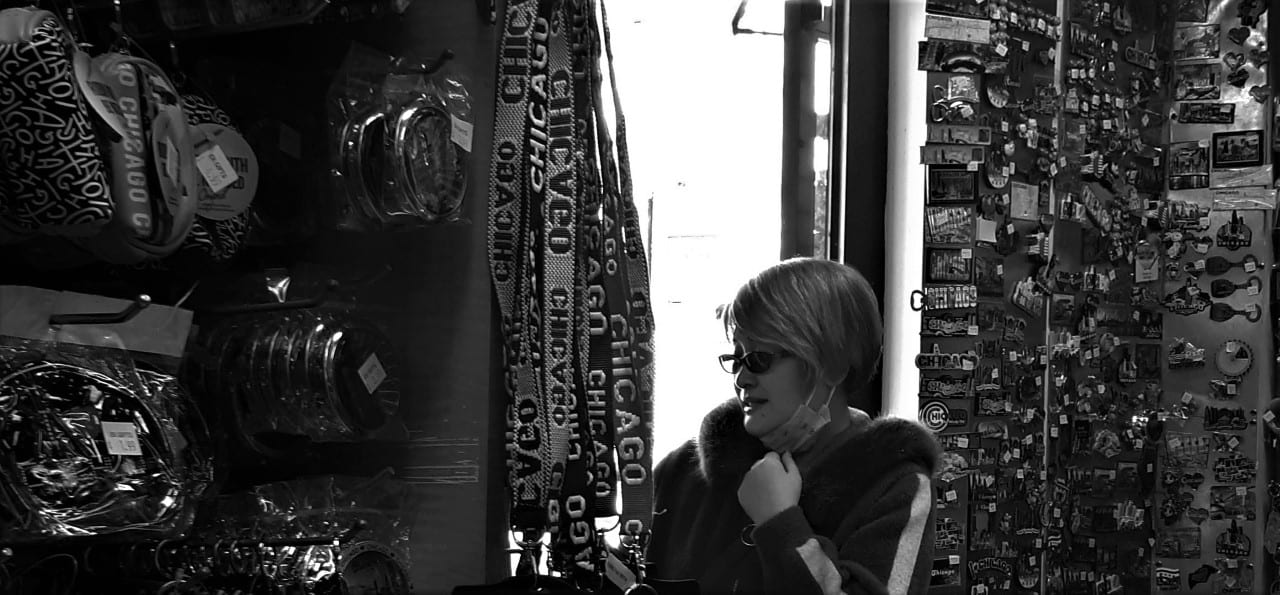Jennifer Kesler’s pictures that captured the last meeting this class had on March 8th, in Chicago, as a field trip. The following week was our spring break, after which the break was initially extended for one more week, and then all the classes started to be offered online, and then the university shut down.

Coronavirus has directly stigmatized Chinese Americans to be carriers of the disease because of the viruses’ origin. Fear of discrimination has made sick people reluctant to reach out for help. (Facts from https://www.ncbi.nlm.nih.gov/pmc/articles/PMC7052559/)

Social Isolation The University of Chicago’s Smart Museum of Art before closure for Coronavirus prevention

Social Distancing The University of Chicago’s Smart Museum of Art before closure for Coronavirus prevention

Professor Liu and student Ashanti Huddleston The University of Chicago’s Smart Museum of Art before closure for Coronavirus prevention
Ashanti Huddleston’s lens focused on the Old Chinatown, or the second Old Chinatown, of Detroit, located in the center of today’s Cass Corridor. She also presented to us the contrasts she saw between the Old Chinatown and the new Chinese business center.

While Detroit’s 2nd Chinatown was deserted long ago because of gentrification and displacement, reasons for emptiness seen here is attributed to fear and caution due to Covid-19.

A renovation of a relic of long ago, The Peterboro symbolized by a dragon representing power and luck to the Chinese culture, also speaks to the resilience of Old Chinatown.

A totem placed as visible landmark, intersecting two idea of Old Chinatown, one of memorial/ reverence and of gentrification or “urban renewal”

Chung’s lettering acts as a snapshot of Old Chinatown, preserving its memory, not far Little Cesar’s Area.

This busy local Asian based market, 168 Asian Mart, named after the lucky number, reflects the importance of shopping to the Chinese. The cultural norm of wearing a mask in China has become a social norm for everyone while out in public.
Randy Owusu is a photography major and this project was completely an uncharted territory for him. But the pandemic provided him with a good opportunity to practice his imagination as a photographer, to let the camera see the people gone from the streets and the community lost in the past. Or the China he has never been to.

looking for china…in chinatown#1

looking for china… in chinatown #2

looking for china…in chinatown #3

trace #1

trace #2

trace #3
Pictures by Prof. Marilyn Zimmerwoman, who showed us how Chinese art and the Western aesthetics combine and how our students view it.





And, my pictures captured the students trying to learn about the Chinese in China, in Chicago, or in the Chinese classroom at Wayne State

Jennifer and John

Marilyn and Ashanti

Jennifer and Randy, the Chinese classroom

Ashanti, the Chinese classroom

Old Chinatown, John

Old Chinatown, Ashanti

Old Chinatown, Randy

Old Chinatown, Jennifer

Old Chinatown, yes, old
And finally, an essay written by Ashanti Huddleston:
Before this class I didn’t think much about photography, I had believed that just picking up a camera pointing it and shooting and making sure it wasn’t blurry made a good picture, but from this class I have learned it is much more to photography than that. Through our class sessions I have learned that photography gives an audience the opportunity to experience a moment that they didn’t live first-hand. It also gives the photographer a chance to tell a story or the beginning of a story through their photographs. I have learned that photography takes time, effort and a lot of trial and error. When looking at what you want to photograph you have to pay attention to everything in the frame and its position and that a good photograph lets the viewer see more details the longer you look at it while at the same time creating a story. A good photograph is much more than point and shoot and uses factors such as composition. My story behind all of the pictures I have taken for this class is one documenting the past while living in the present. Through our class discussions and the professional speakers, from the fields of photography and archiology, I started to understand Chinese people in Detroit had some similar experiences as other minorities, specifically Black people. I had always wondered about how other minorities were impacted by redevelopment of neighborhoods and communities and this class talked about it. From this class I have learned that Detroit has had 2 Chinatowns in different locations, I had never known that the original Chinatown had been moved in order for other infrastructure to be placed. I also learned about famous Chinese photographers and how they decided the subjects of their photographs. Through our trip to Chicago I got to see how Chinese people view China and their community and that China is the largest producer and consumer of cigarettes in the World. I also got to learn how Chinese people shop in comparison to how Americans shop and what is common in the Chinese cuisine through Chicago’s Chinatown and in 168 Asian Mart. This class has taught me a lot outside of just learning how to take pictures that tell a story.
 Greetings from Fourth Floor Manoogian
Greetings from Fourth Floor Manoogian


